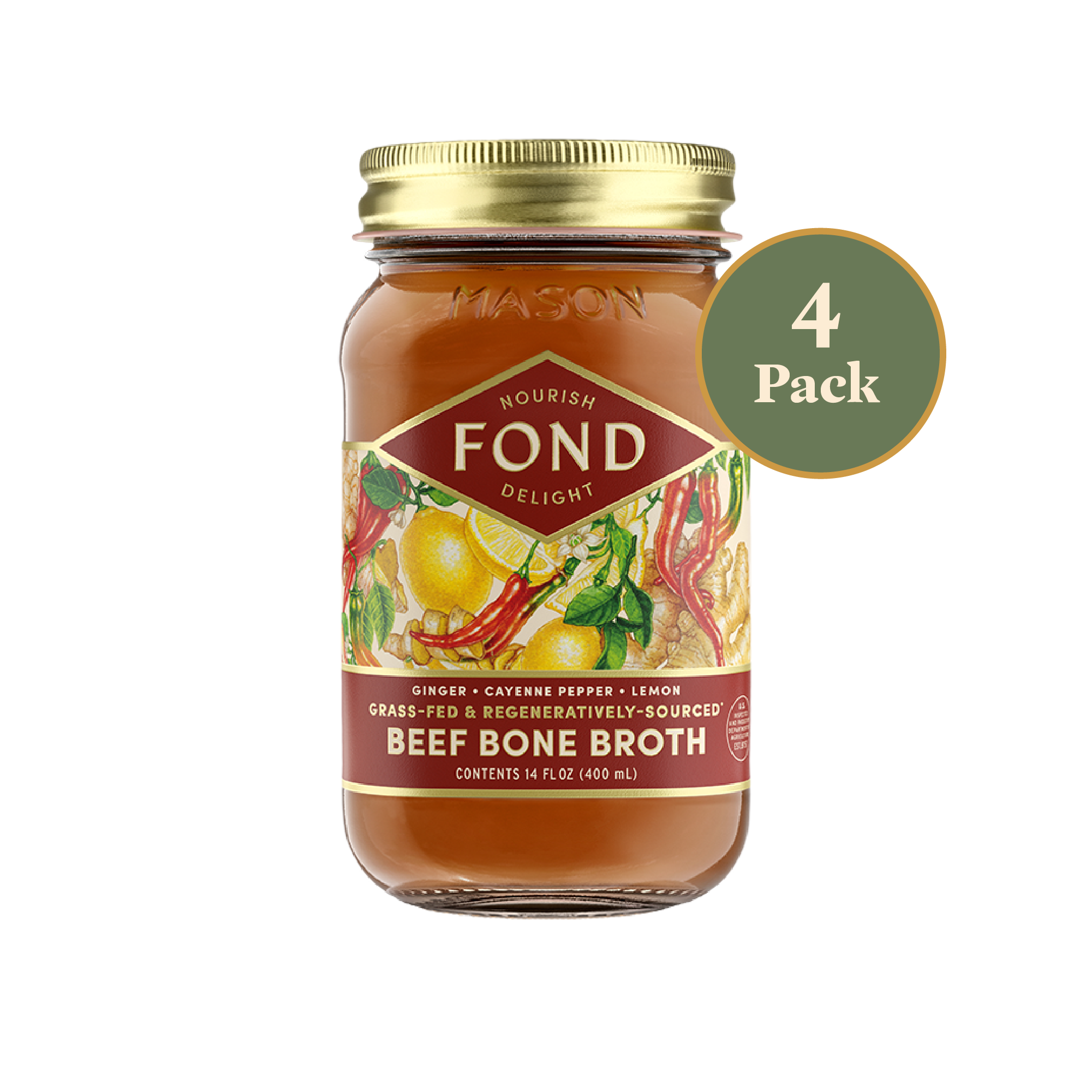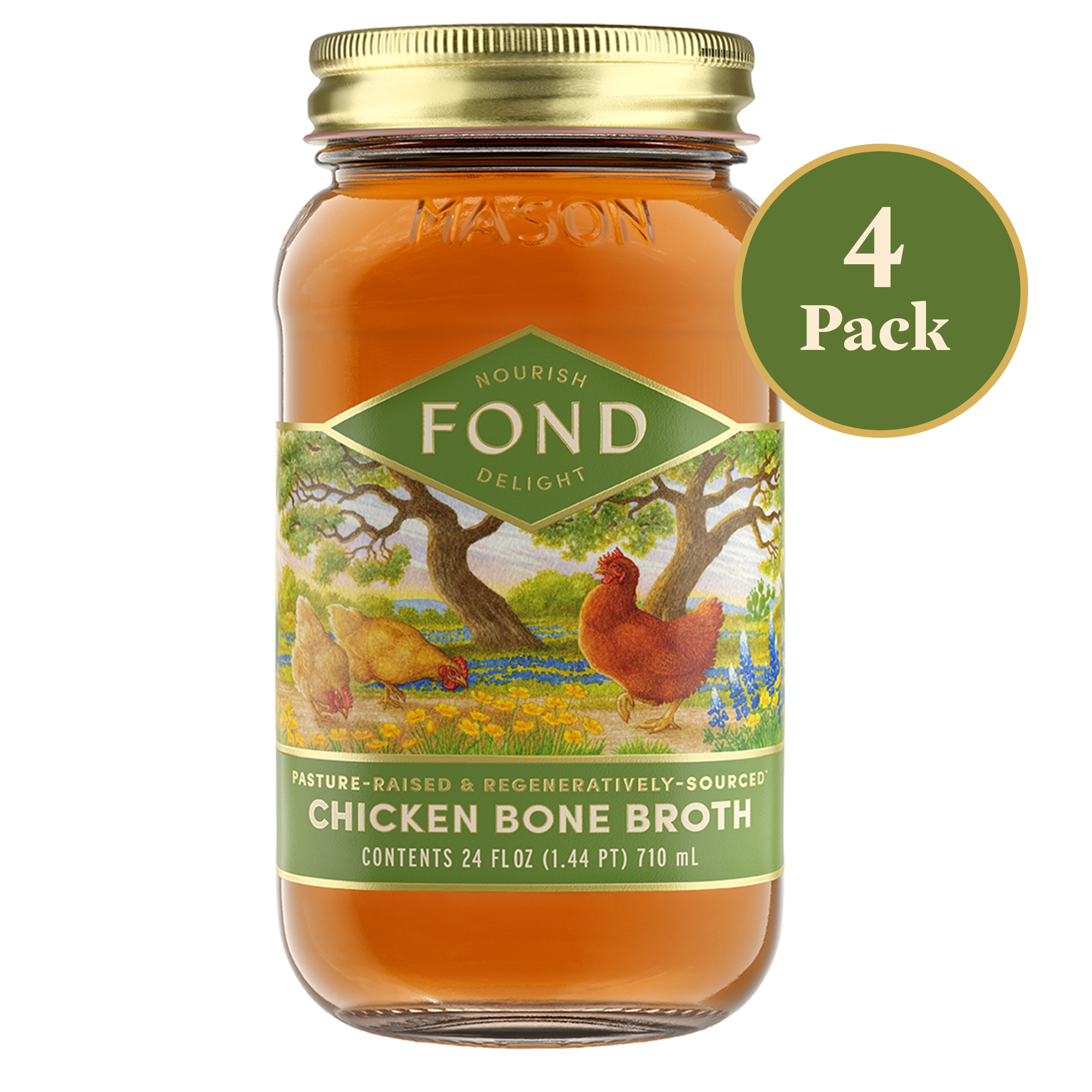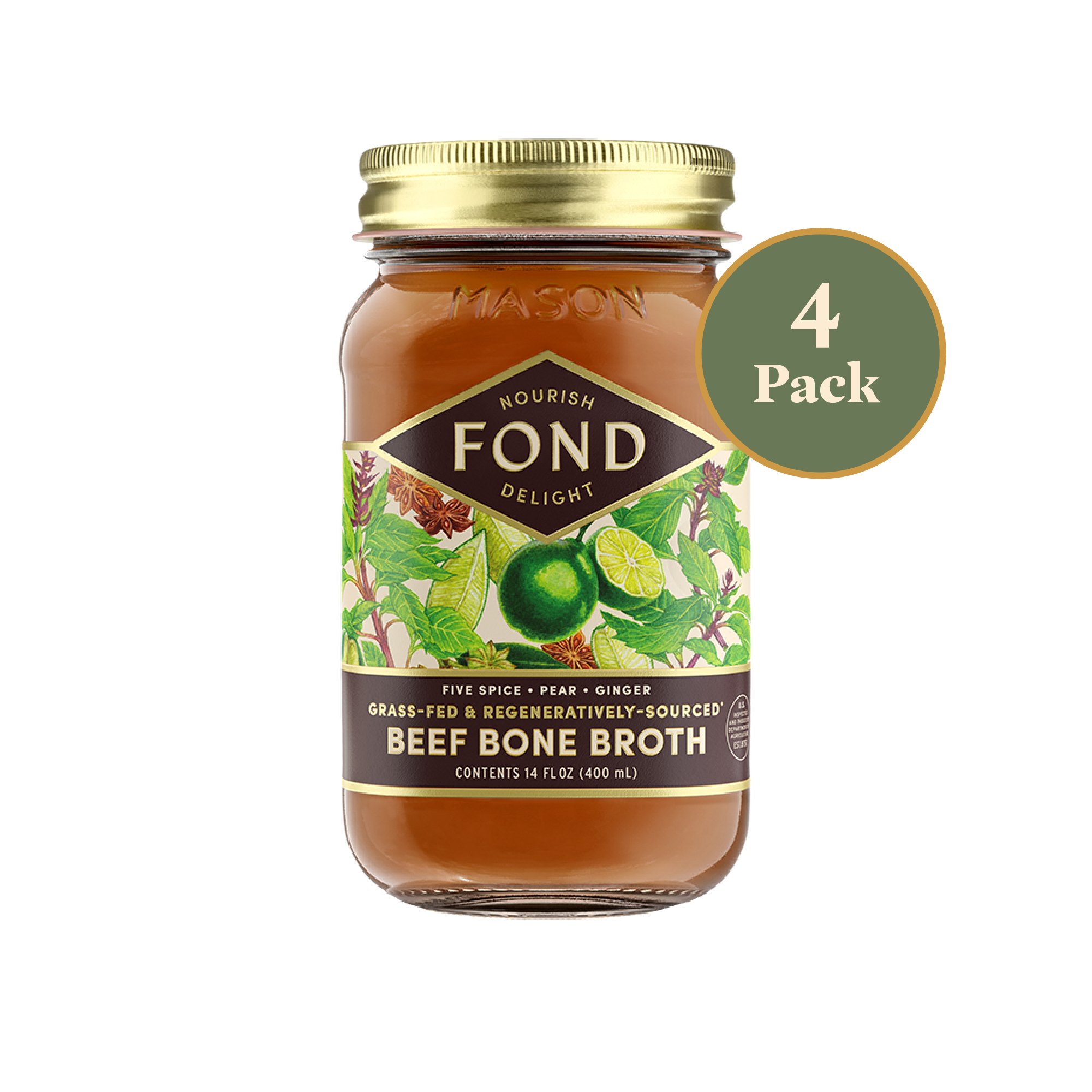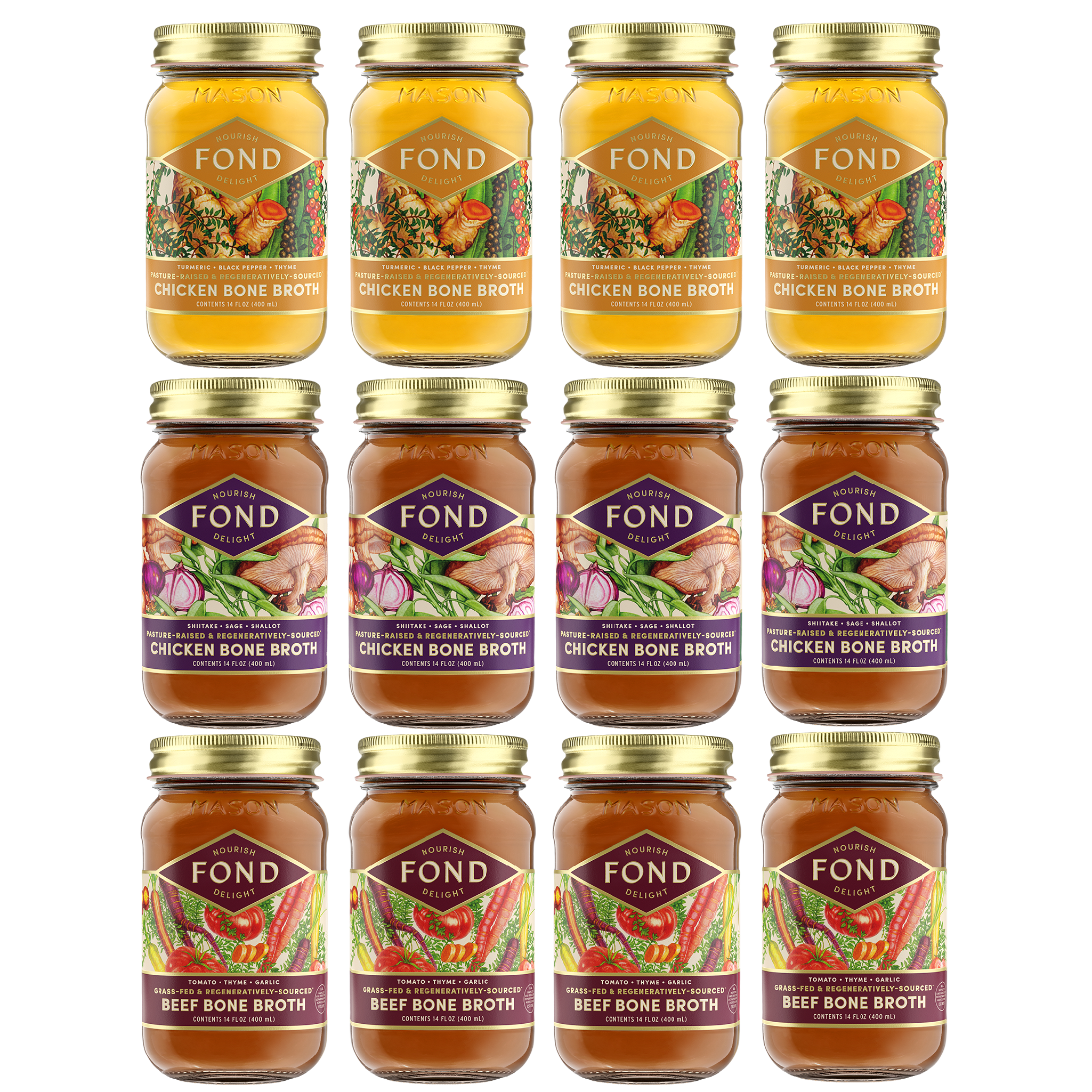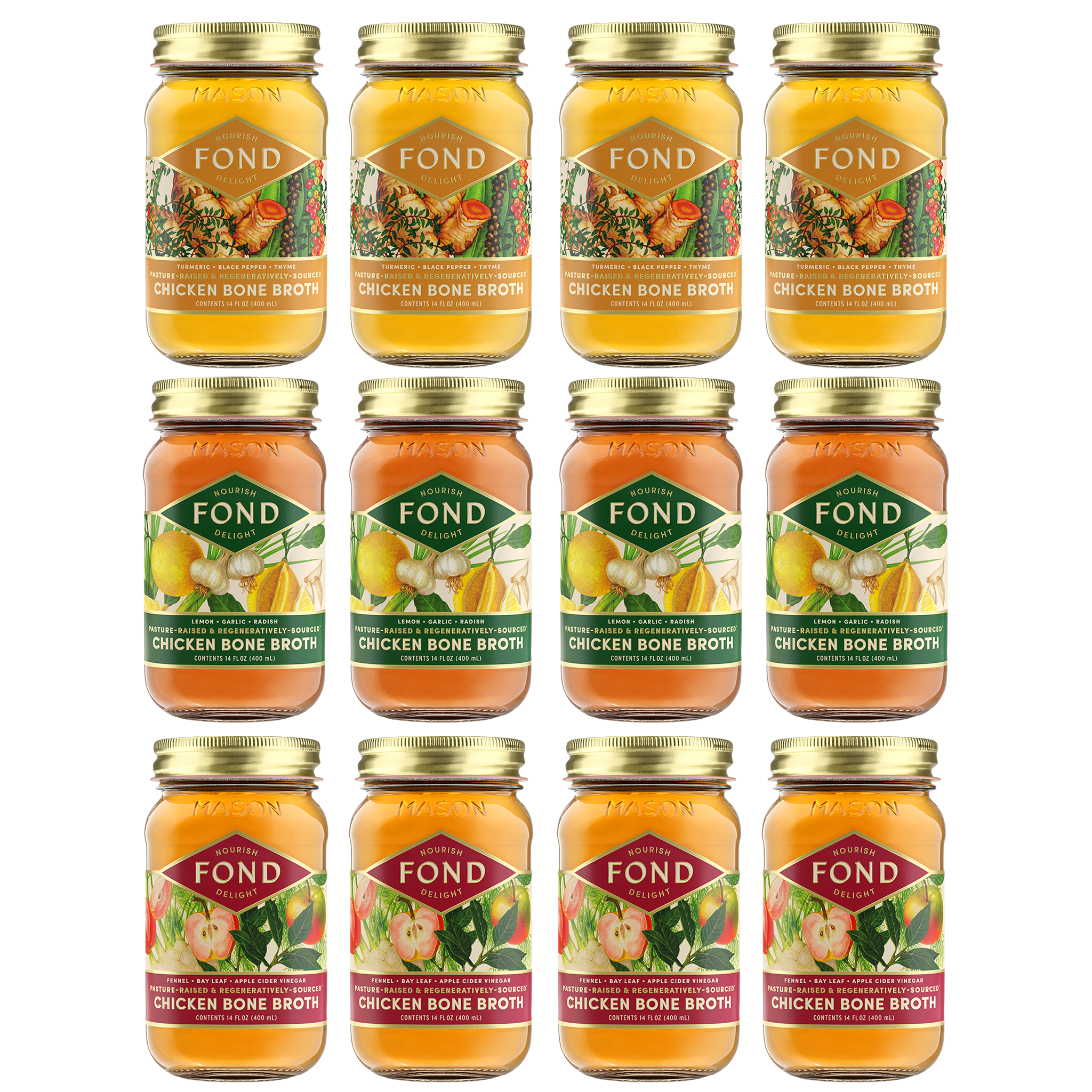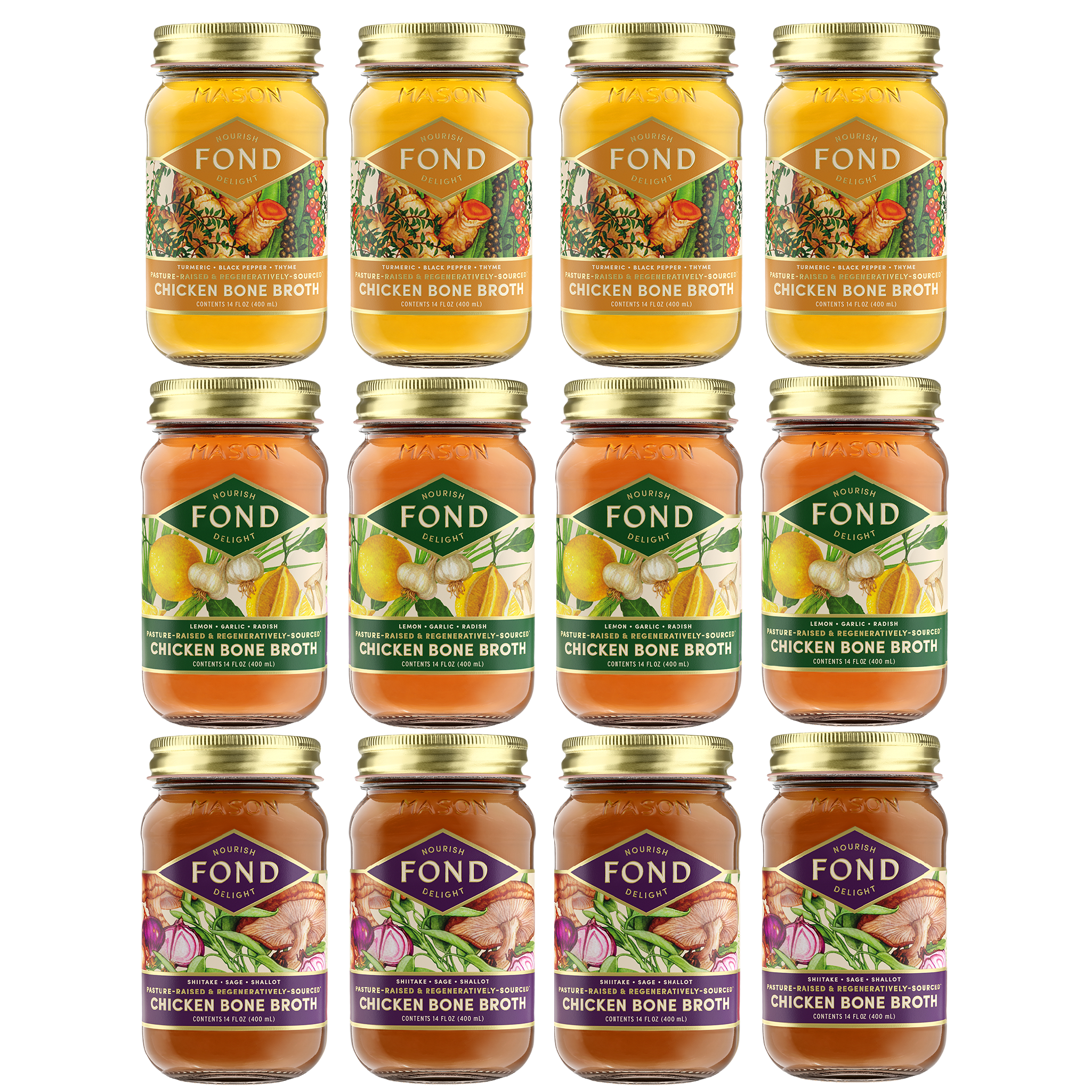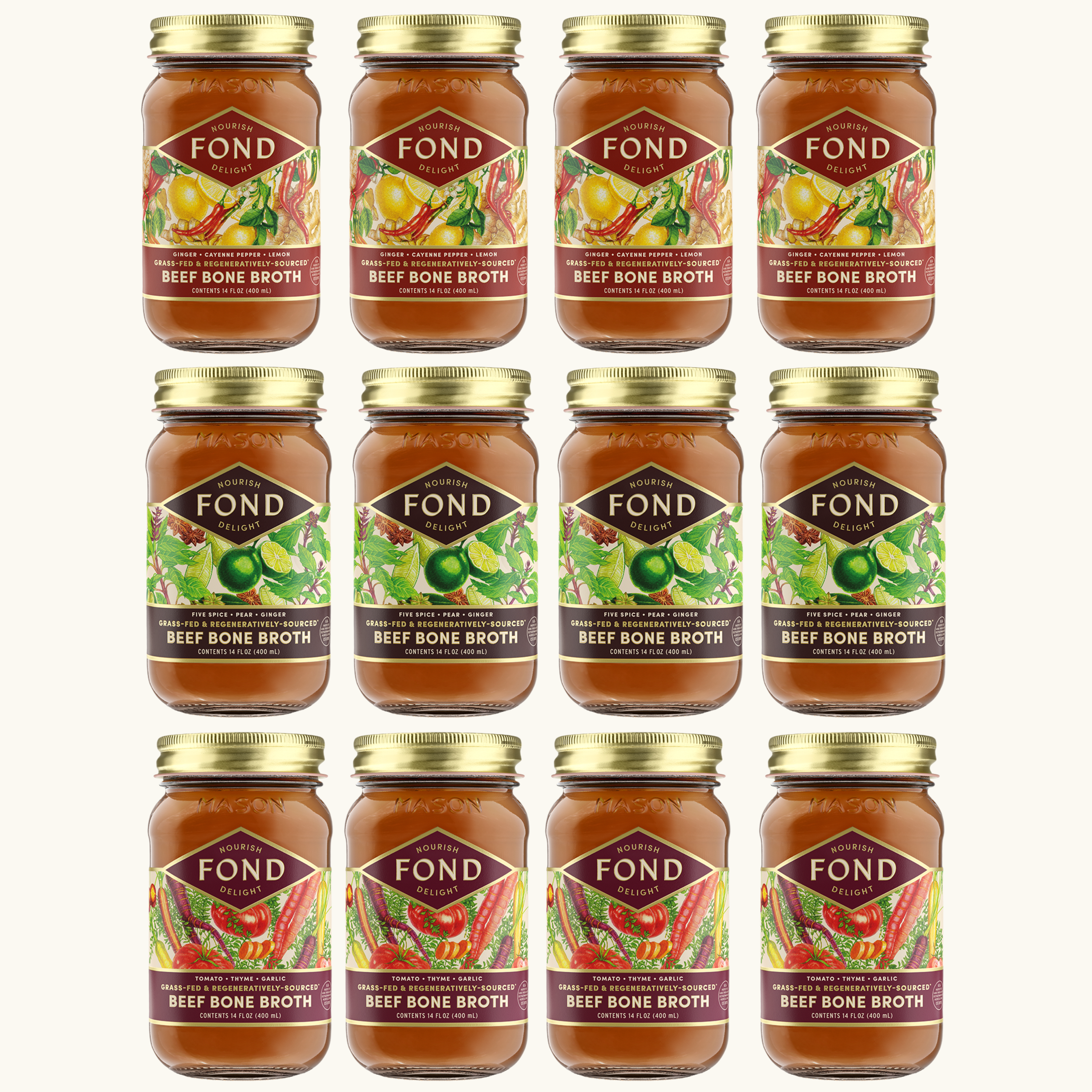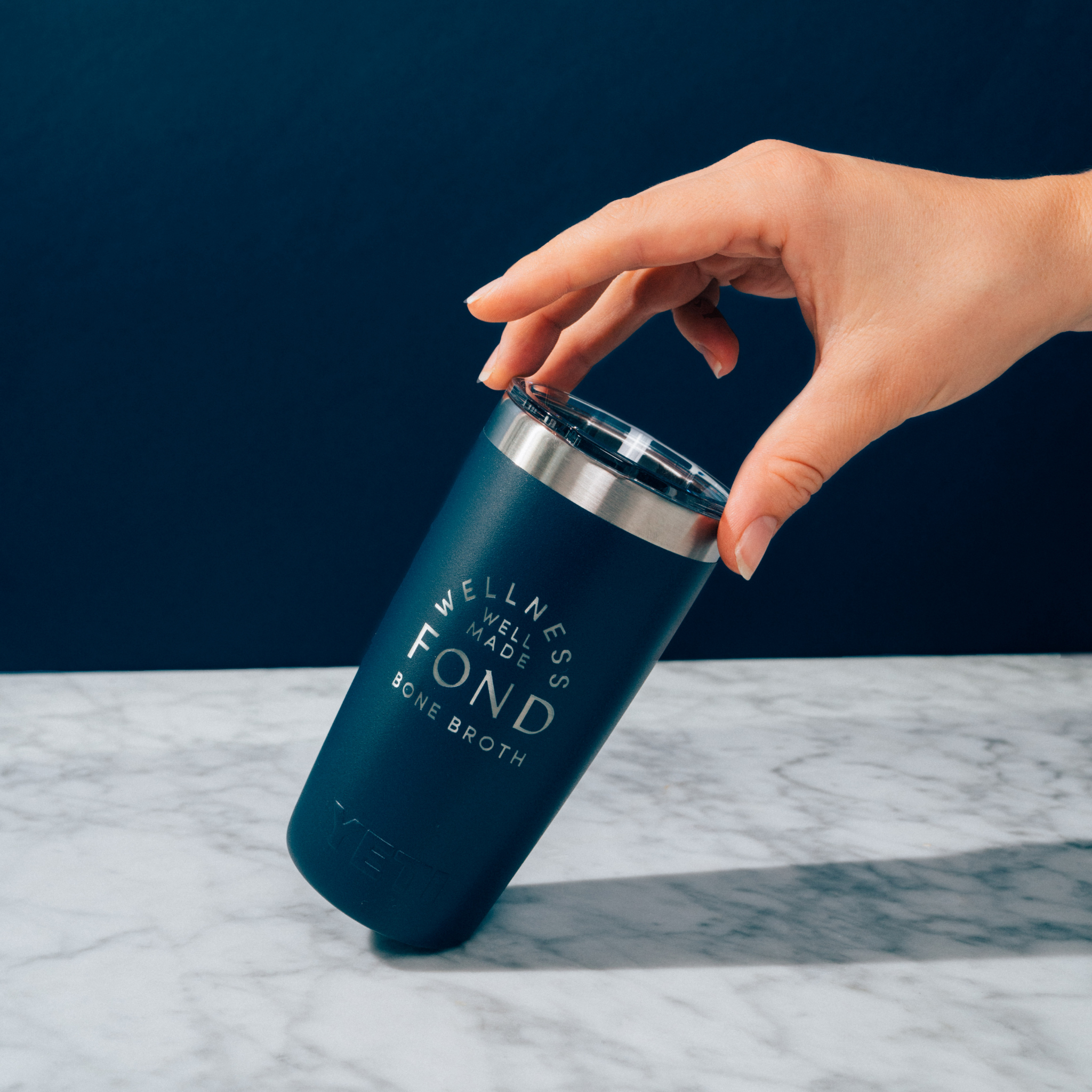What is bone broth?
Bone broth has been touted as a superfood for centuries, celebrated for its rich flavor and numerous health benefits. But what exactly is bone broth, and how do you choose the best one for your health?
At its core, bone broth is a savory liquid made by simmering bones and connective tissue, typically from chicken or beef, in water for an extended period of time. This slow-cooking process extracts valuable nutrients such as collagen, gelatin, amino acids, and minerals, resulting in a nourishing elixir that can support your overall well-being.
Bone Broth vs Broth vs Stock
I get this question a lot, and it’s definitely important to understand the difference between bone broth, broth, and stock! Technically, bone broth is a stock, since it’s made from simmering bones, ligaments, and connective tissue. Where bone broth and stock differ is in the cook time. Bone broth is typically simmered for 24-48 hours, whereas stock is usually cooked for 2-6 hours. Broth, on the other hand, is typically made from meat or veggie scraps, and only simmered for 1-2 hours. Because of its longer cook time, bone broth has a thicker consistency (thank you, collagen!) and is much more nutrient-dense. I’d say bone broth is like liquid gold: rich in protein, collagen, vitamins and minerals, while stock is like liquid silver. Still delicious, still full of flavor, but not as nutritious! You’ll notice that when you read your label, bone broth contains more protein than its broth or stock counterparts.
Best Bone Broth Practices
As the label reading queen, I will always recommend you read the label of whatever is going into your body, including bone broth.
When selecting a bone broth, it's essential to pay attention to the ingredients. Look for broths made from organic, grass-fed, and pasture-raised animals. Bones sourced from these animals will create a more nutrient-dense final product.Like most foods, you should also avoid broths containing artificial flavors, preservatives, or excessive sodium.
FOND is my personal favorite and always my top recommendation for clients, thanks to their ingredient sourcing (100% grass-fed beef and pasture-raised chicken, all verified regenerative) and the fact that the broth is free of preservatives and additives without added sugars, hormones, or GMOs.
What is regenerative Farming?
Regenerative farming is meant to protect and enrich the soil, increase soil biodiversity, integrate livestock, and improve water retention. Basically, it’s farming but with a focus on leaving the environment better than it was before.
Regenerative farming results in a more nutrient-dense product. For example, when one of FOND’s partner farms tested their regeneratively-raised f chickens, they found that they contained 6x the amount of glutathione, the body's master antioxidant, compared to conventionally-raised chickens. So, when considering the HOW behind your bone broth, keep this fact in mind!
So, why does a Registered Dietitian support the nutritional benefits of bone broth and recommend it? Let’s get into it!
Six Reasons Why Bone Broth is Beneficial to Your Health
- Supports Optimal Gut Health: The amino acids and gelatin found in bone broth can help repair and maintain the lining of the digestive tract, promoting gut health and reducing inflammation. This could aid digestion and potentially address concerns like leaky gut syndrome[^3].
- Supports Skin, Hair, and Nail Health: Collagen, a protein abundant in bone broth, plays a crucial role in maintaining the elasticity and integrity of your skin, hair, and nails. Incorporating bone broth into your diet can help you achieve a radiant complexion and stronger, healthier hair and nails.
- Hydration: Bone broth is a hydrating beverage that can help replenish essential electrolytes we lose through sweat and daily activity, like sodium, phosphorus, magnesium and calcium.
- Supports Bone and Joint Health: The gelatin in bone broth may support joint health and gut health. Regular consumption of bone broth may help prevent bone loss, alleviate joint pain, and promote overall musculoskeletal health. Bone broth also supplies a range of amino acids crucial for muscle repair, neurotransmitter production, and hormone regulation.
- Aids in Digestion: Amino acids like glutamine, found in bone broth, might play a role in supporting the immune system and its overall function[^5]. If you’re experiencing GI discomfort before or after meals, consider incorporating bone broth. While pregnant, I relied on FOND heavily when I was nauseous and still looking for nutrients, since it’s the quintessential easy-to-digest nourishment!
- Supports the Body's Natural Detoxification: The nutrients in bone broth, like glycine, support the liver's natural detoxification processes, helping your body eliminate toxins more efficiently. Glycine is a precursor needed for the body to produce glutathione, mentioned earlier as the body’s master antioxidant. Glutathione helps the liver flush out chemicals, stored hormones, and other waste products.
Keep reading about ways bone broth can support your health here!
Easy Ways to Enjoy Bone Broth in Your Diet
Personally, I love to drink bone broth straight from the jar, especially when it tastes as good as FOND does! It’s savory, a little salty and takes little to no time to prepare. I quickly heat it on the stove and pour it back into the jar for easy transport as I’m starting my day. But, if you’re looking for ways to incorporate bone broth on a more regular basis, I’ve got a few ideas for you! Here are some simple ways to enjoy the benefits of bone broth:
- Use it as a base for soups and stews: Substitute water or store-bought broth with bone broth for added flavor and nutrition. I like to make a simple chicken noodle soup with whatever veggies I have on hand, rotisserie chicken and gluten-free noodles.
- Cook grains and legumes in bone broth: Replace water with bone broth when cooking rice, quinoa, or lentils to infuse them with extra nutrients and savory flavor. I swear by making my basmati rice in bone broth; it’s so buttery and delicious!
- Add bone broth to your starches, like mashed sweet potatoes, for a creamy factor. I’ll use FOND instead of a heavy cream for a healthy dose of flavor and protein.
SOURCES:
- “Nutrient composition and content of bone broth.” Curr Res Nutr Food Sci. 2018.
- “Gelatin tannate reduces the proinflammatory effects of lipopolysaccharide in human intestinal epithelial cells.” Clin Exp Gastroenterol. 2016.
- “Glutamine and the immune system.” Amino Acids. 2015.
Whitney Stuart, is a registered dietitian-nutritionist (a dietitian, RD, and RDN!) and Certified Diabetes Care and Education Specialist (CDCES) focused on the improvement of metabolism, gut health and blood sugar through high-touch functional nutrition programs. Learn more about Whitney’s virtual practice, Whitness Nutrition, here and follow her on social media, @whitnessnutrition, for more blood sugar bliss education.










